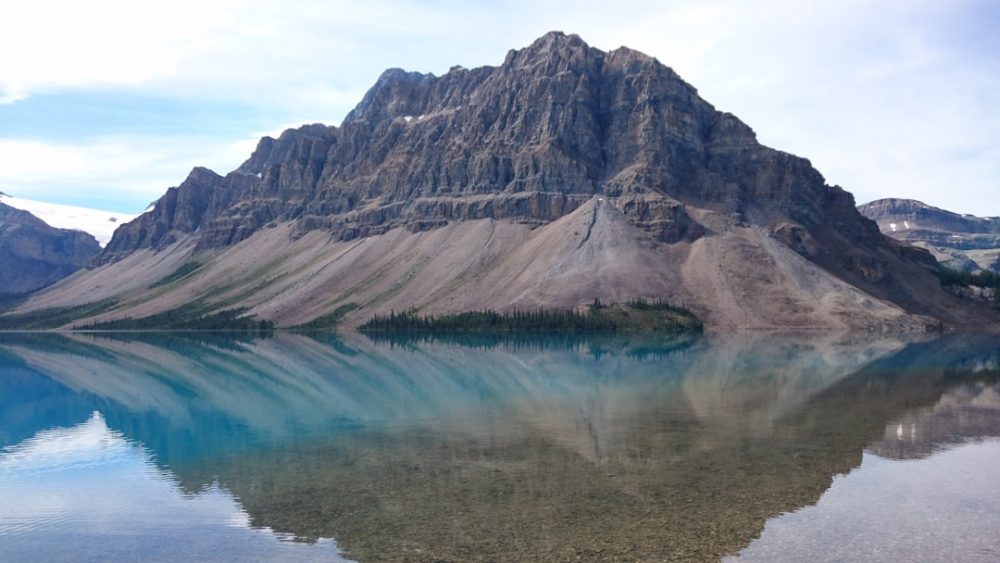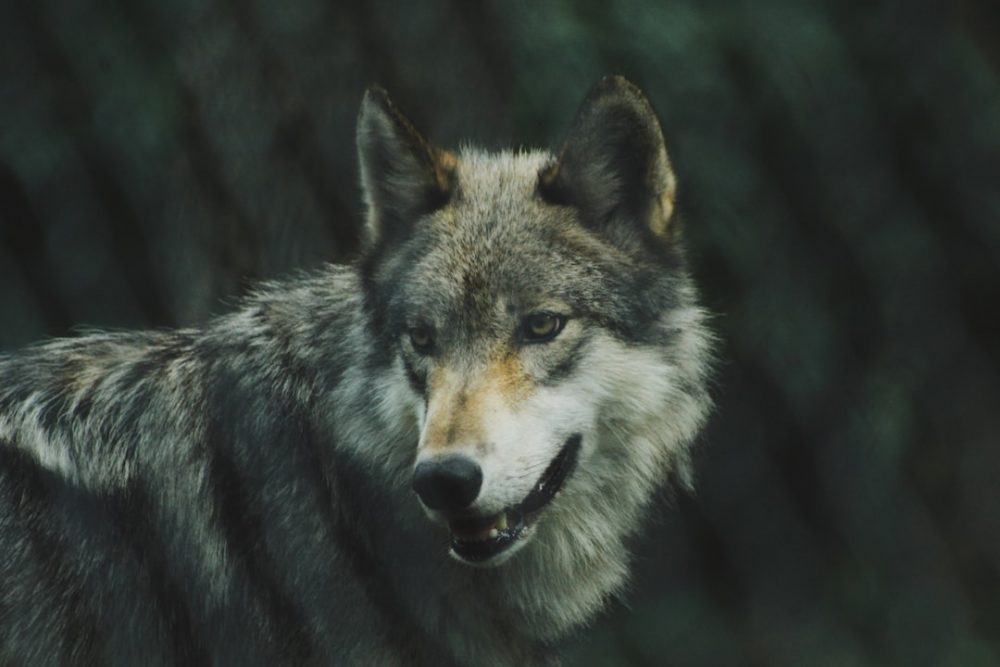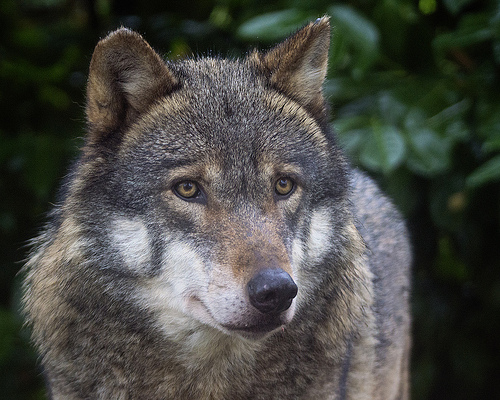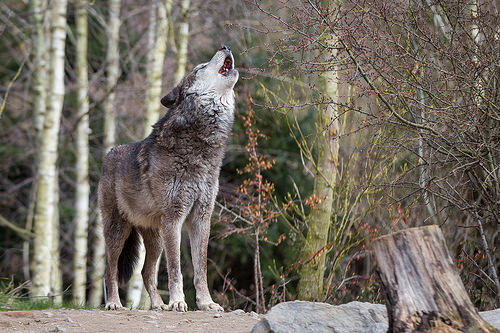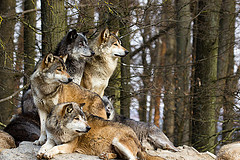The Grey Wolf’s Habitat in the United States
The grey wolf, also known as the timber wolf, is a majestic and iconic species that has long captured the imagination of people around the world. With its striking grey coat, piercing yellow eyes, and powerful build, the grey wolf is a symbol of strength, resilience, and wildness. This magnificent creature has played a significant role in human culture and folklore for centuries, often being portrayed as both a fearsome predator and a symbol of loyalty and teamwork. The grey wolf is a highly social animal, living and hunting in packs that are led by an alpha male and female. They are known for their intelligence, complex communication, and strong family bonds.
The grey wolf is also an apex predator, playing a crucial role in maintaining the balance of ecosystems by controlling prey populations and preventing overgrazing. Unfortunately, due to habitat loss, hunting, and persecution, the grey wolf has faced significant challenges in recent centuries. However, through conservation efforts and legal protections, there have been some successes in restoring the grey wolf’s populations in certain areas. In this article, we will explore the historical range and decline in population of the grey wolf, its current habitat and distribution in the United States, key features of its habitat, threats to its habitat, conservation efforts and successes, and the future outlook for the grey wolf’s habitat.
Historical Range and Decline in Population
The grey wolf once had a vast historical range that spanned across North America, Europe, Asia, and the Middle East. They were once found in a wide variety of habitats, including forests, grasslands, tundra, and deserts. However, due to human expansion and development, the grey wolf’s historical range has been greatly reduced. In the United States, the grey wolf was once found throughout most of the country, but by the mid-20th century, they had been extirpated from much of their range due to hunting, trapping, and habitat destruction.
The decline in the grey wolf population was largely due to human persecution and fear. In the 19th and early 20th centuries, government-sponsored predator control programs aimed to eliminate wolves from the landscape in order to protect livestock and game animals. Bounties were placed on wolves, leading to widespread hunting and trapping that decimated their populations. By the mid-20th century, the grey wolf had been nearly eradicated from the lower 48 states, with only a few small populations remaining in remote areas such as Minnesota and Michigan. This drastic decline in population led to the grey wolf being listed as an endangered species under the Endangered Species Act in 1974.
Current Habitat and Distribution in the United States
Today, the grey wolf’s habitat and distribution in the United States are limited to a few key areas in the northern Rocky Mountains, the Great Lakes region, and the Pacific Northwest. In the northern Rocky Mountains, grey wolves can be found in Idaho, Montana, and Wyoming. In the Great Lakes region, they are found in Minnesota, Wisconsin, and Michigan. In the Pacific Northwest, they are found in Washington and Oregon. These areas provide a mix of forests, grasslands, and rugged terrain that offer suitable habitat for grey wolves to thrive.
The reintroduction of grey wolves into Yellowstone National Park in 1995 was a significant milestone in their recovery efforts. This successful reintroduction has led to a growing population of grey wolves in the park and surrounding areas. Additionally, efforts to reintroduce grey wolves into other parts of their historical range have been ongoing. For example, there have been successful reintroductions of grey wolves into parts of Arizona and New Mexico. These efforts have helped to expand the grey wolf’s range and increase their population numbers.
Key Features of the Grey Wolf’s Habitat
| Key Features of the Grey Wolf’s Habitat |
|---|
| 1. Wide range of habitats including forests, grasslands, tundra, and deserts |
| 2. Preference for remote and undisturbed areas |
| 3. Need for access to water sources |
| 4. Large territories for hunting and denning |
| 5. Ability to adapt to human-modified landscapes |
The grey wolf’s habitat is characterized by a diverse range of ecosystems that provide ample prey species and suitable denning sites. They are highly adaptable animals that can thrive in a variety of habitats, including forests, grasslands, tundra, and mountains. Grey wolves are known for their wide-ranging behavior and can cover large distances in search of food and suitable habitat. They are also highly territorial animals that establish home ranges where they hunt, den, and raise their young.
One key feature of the grey wolf’s habitat is the availability of prey species such as deer, elk, moose, bison, and smaller mammals like rabbits and rodents. These prey species are essential for the survival of grey wolves and play a crucial role in maintaining healthy populations. Additionally, suitable denning sites are important for grey wolves to raise their young. They often use natural features such as caves, rock crevices, or dense vegetation to create dens where they can give birth and protect their pups.
Threats to the Grey Wolf’s Habitat
Despite some successes in restoring grey wolf populations, their habitat continues to face numerous threats that could impact their long-term survival. One of the primary threats to their habitat is human development and land use changes. As human populations continue to expand into wild areas, it leads to habitat fragmentation and loss of suitable habitat for grey wolves. This can result in increased human-wolf conflicts as wolves come into closer contact with livestock and human settlements.
Another significant threat to the grey wolf’s habitat is climate change. As temperatures rise and weather patterns shift, it can impact prey species and vegetation that are essential for the survival of grey wolves. Changes in snowfall patterns can affect the ability of wolves to hunt prey in winter months, while shifts in vegetation can impact the availability of suitable denning sites.
Furthermore, illegal poaching and hunting continue to pose a threat to grey wolves in certain areas. Despite legal protections in place, there are still instances of illegal killing of wolves by individuals who see them as a threat to livestock or game animals. These illegal activities can have a detrimental impact on grey wolf populations and their habitat.
Conservation Efforts and Successes

Conservation efforts aimed at protecting the grey wolf’s habitat have been ongoing for decades and have seen some notable successes. The Endangered Species Act has played a crucial role in providing legal protections for grey wolves and their habitat. This has allowed for the recovery of populations in certain areas where they were once extirpated.
Reintroduction programs have also been successful in restoring grey wolf populations in parts of their historical range. The reintroduction of grey wolves into Yellowstone National Park has been particularly successful, leading to a growing population that has had positive impacts on the park’s ecosystem. Additionally, efforts to reduce human-wolf conflicts through non-lethal methods such as livestock guardian dogs, range riders, and electric fencing have helped to mitigate conflicts between wolves and humans.
Furthermore, public education and outreach programs have helped to raise awareness about the importance of protecting grey wolves and their habitat. By fostering a greater understanding of these animals and their ecological role, it has helped to garner support for conservation efforts.
Future Outlook for the Grey Wolf’s Habitat
The future outlook for the grey wolf’s habitat is both promising and challenging. While there have been successes in restoring populations in certain areas, there are still significant challenges that need to be addressed to ensure their long-term survival. Continued efforts to protect and restore suitable habitat for grey wolves will be essential for their future.
Addressing human-wolf conflicts through proactive management strategies will be crucial for reducing negative interactions between wolves and humans. This includes implementing measures to prevent livestock depredation by wolves while also protecting wolves from illegal killing.
Furthermore, addressing the impacts of climate change on grey wolf habitat will be important for ensuring their continued survival. This may involve monitoring changes in prey species abundance and distribution as well as identifying potential areas for habitat restoration or connectivity.
Overall, continued collaboration between government agencies, conservation organizations, local communities, and stakeholders will be essential for protecting the grey wolf’s habitat into the future. By working together to address threats and implement conservation measures, we can ensure that this iconic species continues to thrive in its natural environment for generations to come.
